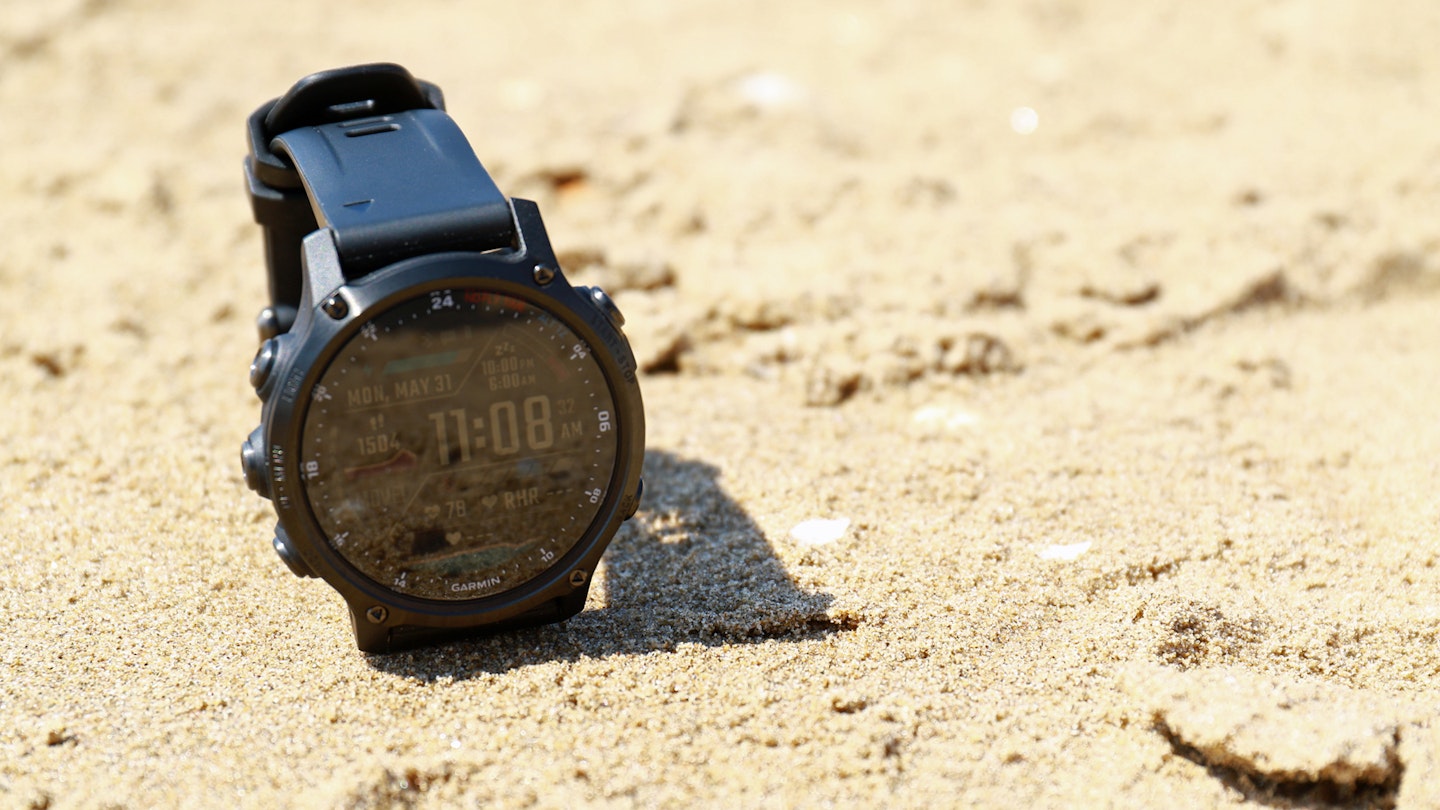Analogue divers’ smartwatches have been popular for decades, even among wearers who have no intention of donning a drysuit and exploring the murky depths of Scapa Flow or the Farne Islands. They offer attractive, rugged styling and waterproofing far beyond what most people require, so you can be reassured the Garmin Descent MK2S can cope with more than just the dishes or a shower.
But can the same be said for a considerably more technical and highly-featured scuba computer? When I learned to dive 20 years ago, if you wore one on dry land, you’d look ridiculous (and couldn’t wear a coat), because they were absolutely massive.
Now all of those functions and more can be crammed into an already very useful smartwatch. So is the Garmin Descent MK2S a niche bit of tech, or a logical digital upgrade from your Rolex Submariner?
| Specifications | |
|---|---|
| Size | 43 x 43 x 14.15 mm |
| Display | 30.40mm, 240 x 240 pixels |
| Battery life | 7-21 days |
| Maximum depth | 100 metres |
| Gas mixes | Air, Nitrox and Trimix, up to 100% O2; 1 bottom gas and up to 11 deco and/or backup gasses. |
| Pros | Cons |
|---|---|
| • Comprehensive activity tracking | • No air integration |
| • Scratch-proof screen | • Plasticky case |
| • Clear and easy to read | • No touchscreen |
Verdict: If you dive as regularly as you train for triathlons then this is the all-in-one watch for you. That might sound like a fairly small cross-section but Garmin seems keen on making an activity tracker for everyone (there's one specifically for truck drivers, for example) so perhaps a better way to view it is as a dive computer that can also tell you how well you've slept, or how far you've been on your bike, so you don't have to own a second device. As a result, it's really rather good.
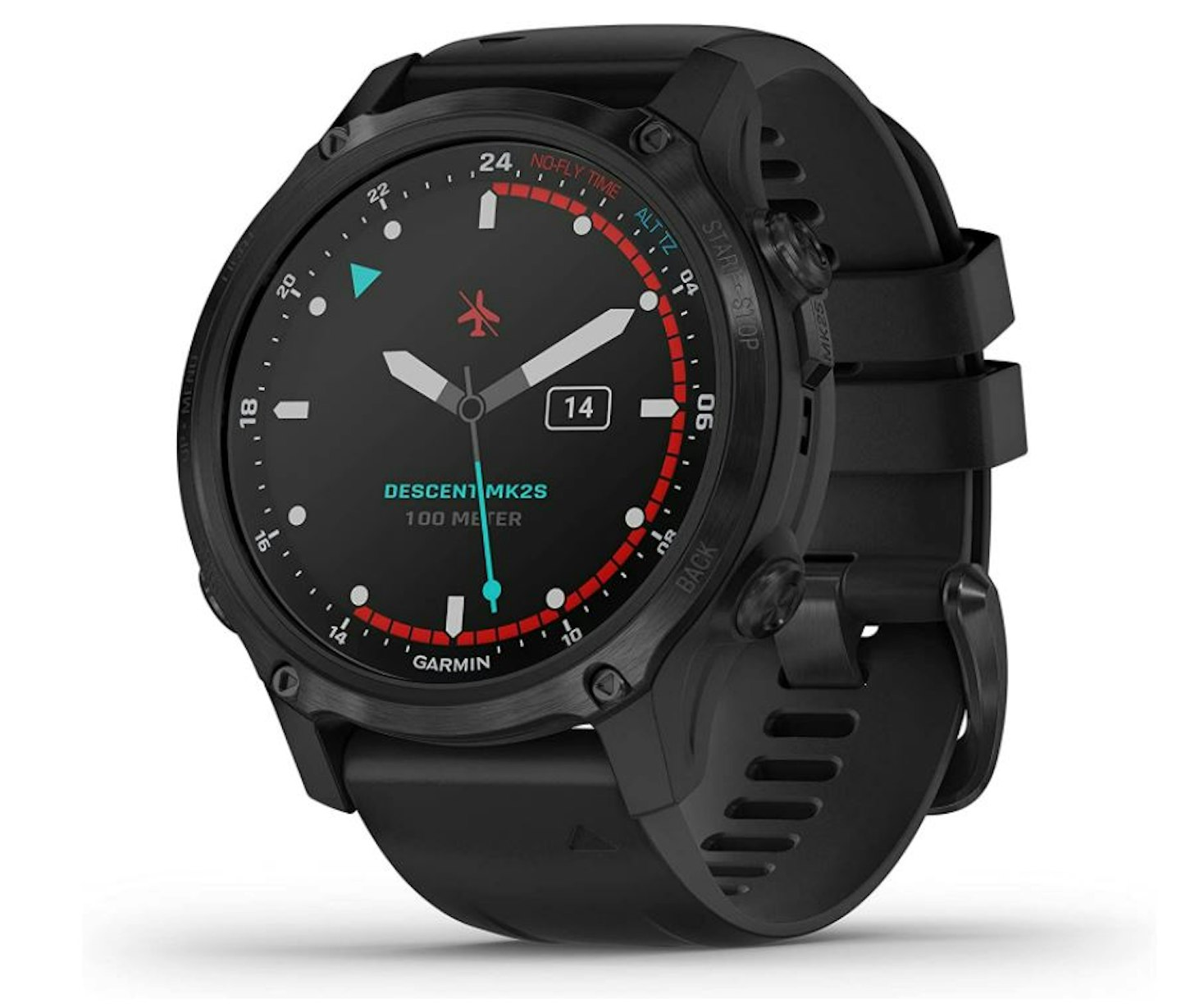
Build
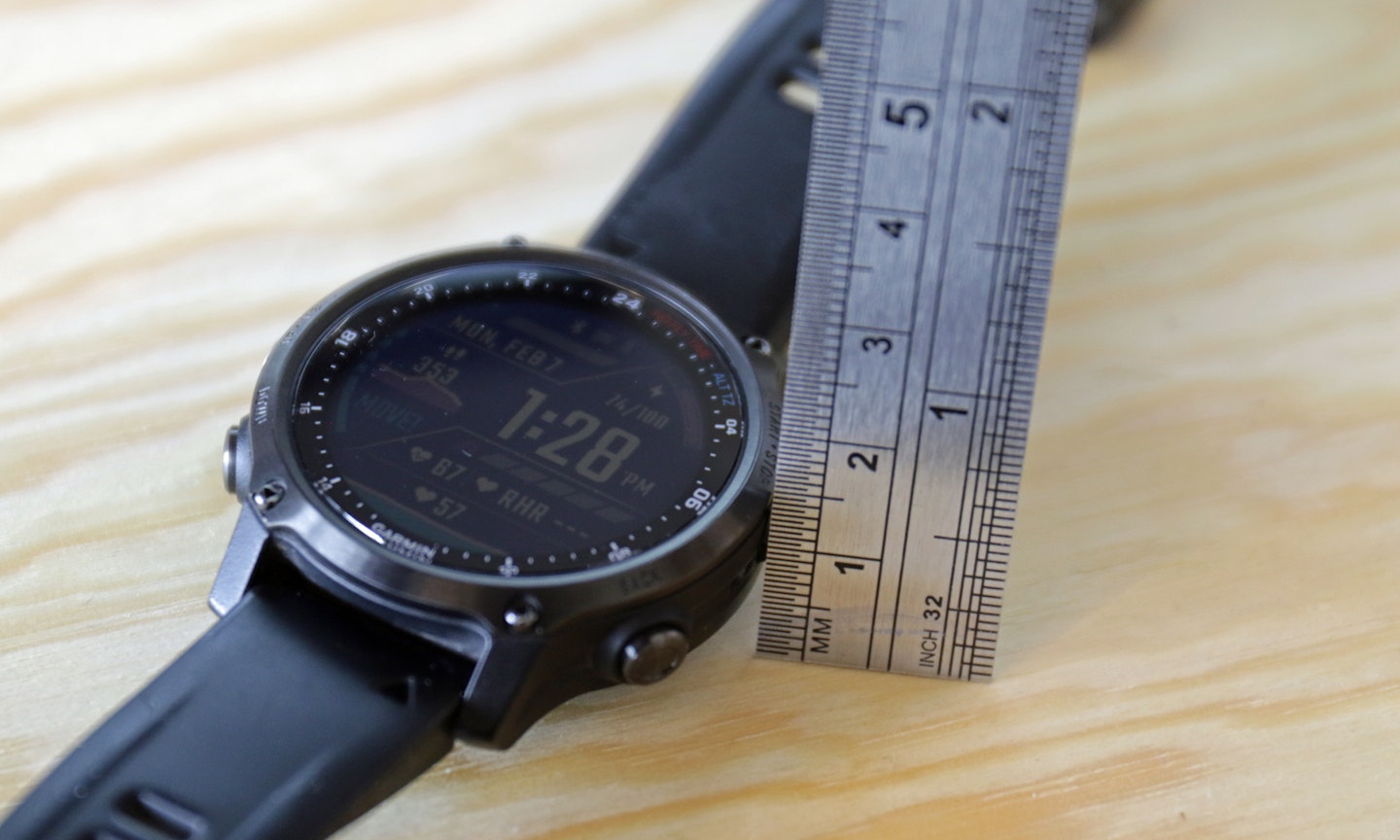
• Smaller 43mm version of Descent Mk2
• Tough plastic and metal construction
• Longer silicone wrist strap included
First a note on where this fits within the range – the Mk2S is a 43mm adaptation of the larger, 52mm Descent Mk2, so it's for people with smaller wrists or those who don’t want to wear a hulking great smartwatch. It is slightly cheaper and other than being incompatible with Garmin’s air integration tech, offers the same features as the larger watch.
Styling-wise there are more options - the Mk2S can be had with a black, blue or beige strap (the Mk2 is black only) and the bezel is a dark metal instead of silver. It looks very stealthy.
That piece and the buttons are the only metal bits on the body of the watch (as well as the hook and catch on the end of the strap) with the rest of it being made of a tough fibre-reinforced polymer. You don’t see this when you look directly at it, top-down, but it is visible from the side. And to be honest, it looks plasticky, although does only weigh 60g.
It will stand roughly 14.5mm from your wrist – and in combination with the shape of the buttons means you have to be careful not to catch it when putting a jacket on, unless you want to accidentally stop tracking an activity. A Fenix 7 is also 14.5mm deep but has a raised area around the stop/start button to help avoid this. The Descent’s buttons will be easier to use when wearing thick neoprene diving gloves, though.
The tough sapphire crystal screen, despite being subjected to many knocks and scrapes, still looks brand new. I am amazed by this, frankly, as all my watches have scratches, even ones that don’t sit quite so proud from on my wrist, usually because they’ve been involved in some sort of mountain bike crash. In fact, the Descent has survived several of those and a run-in with an abrasive indoor bouldering wall – the bezel picked up a small amount of damage but the screen was absolutely fine.
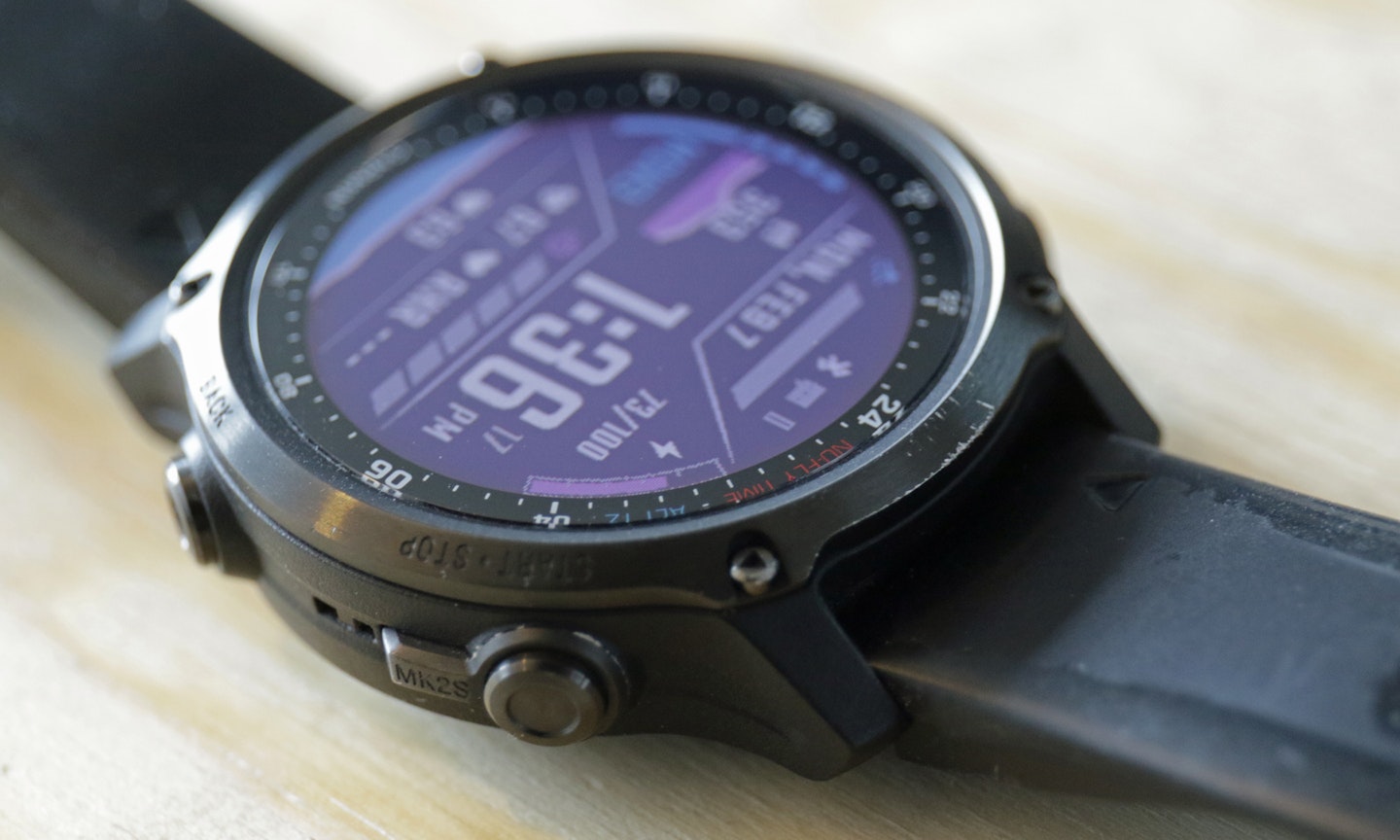
Otherwise, the finish on the rim around one of the buttons is wearing a bit, I suspect from being rubbed in jacket sleeves, and some of the shine has come off the silicone strap, but apart from that, it looks in great shape.
You can get a perfect fit from the 20mm band thanks to its myriad holes that are grouped close together, which is important as I found I’d need to go up a size if I was exercising as it would suddenly be too tight.
There’s also a much longer strap for diving use, that will fit over a wetsuit or drysuit, which is a neat addition. It’s super easy to swap too, unclipping from the body using a quick release fixing. The standard one fits over a wetsuit sleeve just fine though.
In terms of materials, it feels like the Descent Mk2S prioritises functionality over luxury – if you’re coming from an Appleor Android smartwatch then the plastic body and slightly dull, pixelated 240x240 screen might be a surprise given the cost.
But it’ll be hard-wearing and the lack of a touchscreen makes no odds when you’re 30 metres deep and wearing gloves. Also, you a buy a Garmin for its activity tracking first and foremost, whichlike other models we’ve had on test, is industry-leading.
Usability
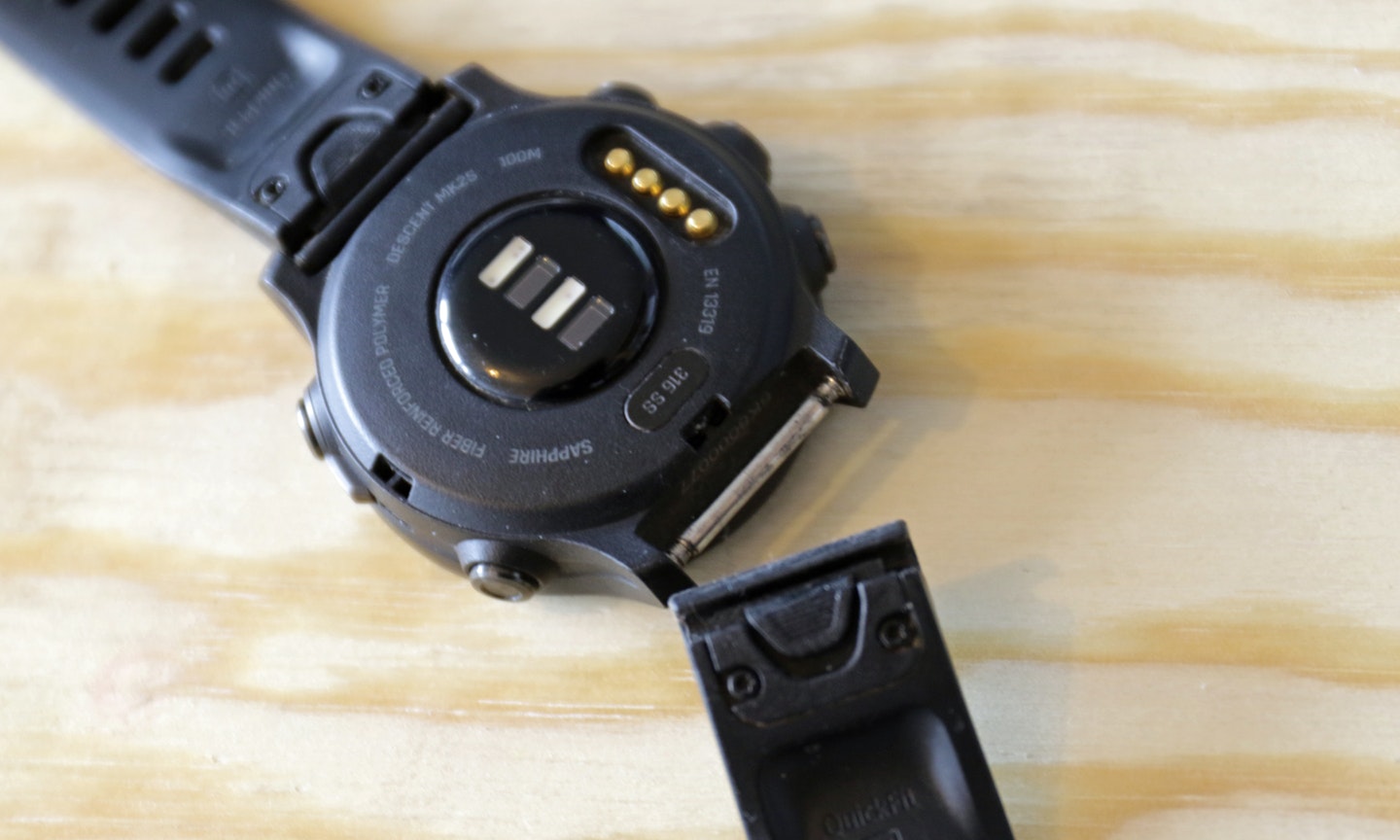
• Takes time to learn its full potential
• Garmin Connect app is excellent
• No touchscreen
For a start, you’ll need the Garmin Connect app, which records all your activities and also acts as a go-between for all (most) of your other activity apps, such as Strava, Zwiftand Komoot. Once set up though it works away in the background syncing everything up (if you want it to) so you don’t have a big silo of data for one activity and then another for a different one.
Outdoor rides can go into Garmin and Strava, indoor training can go from Zwift into Garmin, it all works seamlessly.
To be honest, if you’ve not owned a recent Garmin activity tracker before, the number of features and functions will be overwhelming at first. I only recently discovered I could use it not just to track my indoor cycle turbo trainer, but to actually control the resistance, for example.
I reckon it took three months before I confidently had my head around it and even then, wasn’t using it to its full potential. These are nice problems to have, of course.
In terms of physical usability, there are buttons on the left to navigate the various menus, a backlight button and then two on the right for activity start/stop and back. I don’t really use the menus in the watch, they show the same data as the app and I find the latter easier to navigate.
The lack of a touchscreen does mean you have to zoom and scroll around any maps on the watch using the buttons, which is a faff frankly, but understandable considering the watch’s focus on scuba diving where you can’t really use a touchscreen anyway.
There can sometimes be a bit of a delay between pressing one of the buttons (particularly the one that brings up the menu or activity list) and getting the desired result, but the start/stop is instantaneous and this is the one that really matters.
Performance
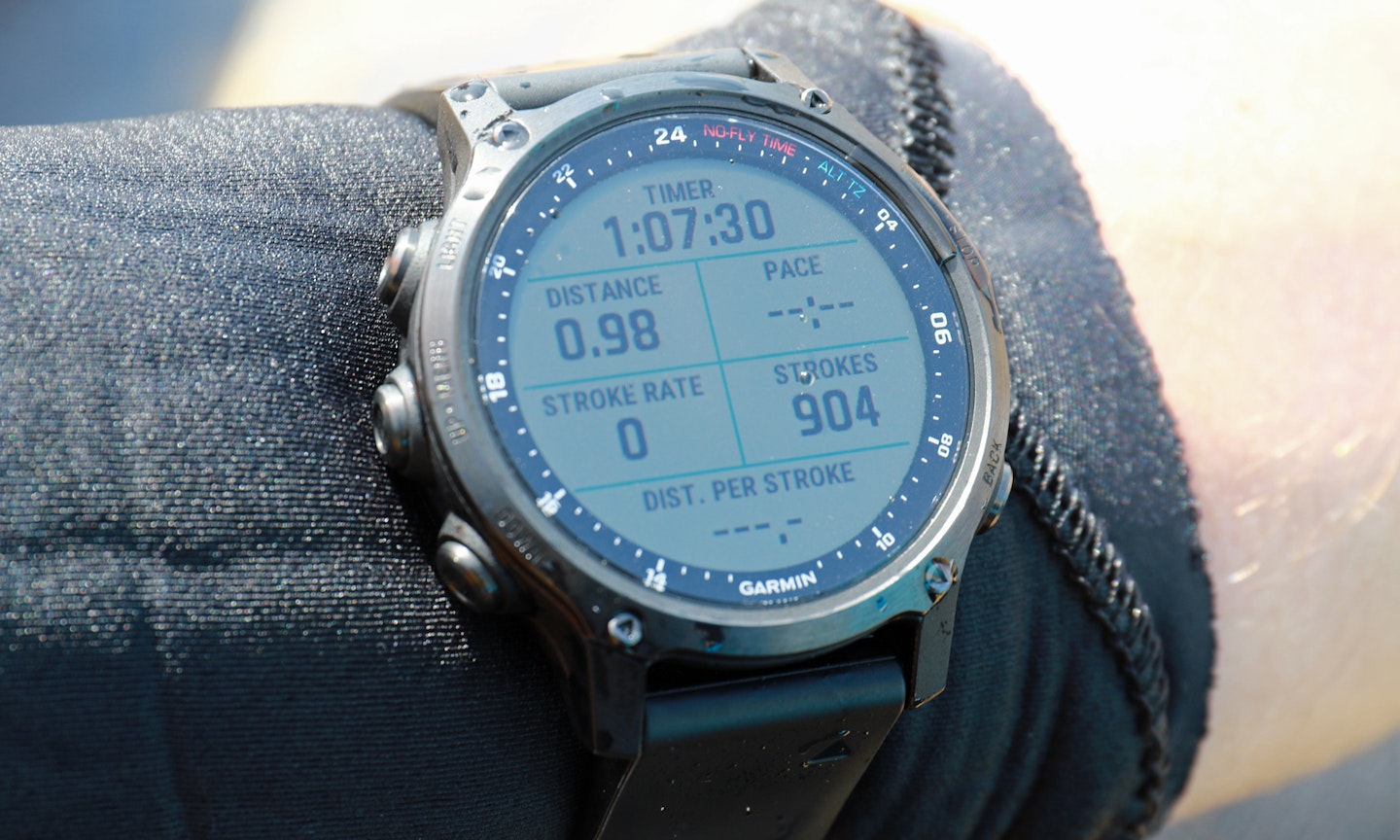
• Shorter battery line than Descent Mk2
• Most mainstream dive types covered
• ...also happens to be a superb activity tracker
Garmin says the Descent Mk2S will last seven days before needing a charge in ‘smartwatch’ mode (i.e, not tracking any activities) or 21 days if you put in battery saver mode. Dive mode offers 30 hours, which is longer than any dive I’ve been on, giving the option of several excursions beneath the waves between charges if you’re on a liveaboard boat and have forgotten your charger cable.
Using the GPS on dry land consumes more battery but should give you an 18-hour run time, although this drops to six hours if you start playing music too.
In terms of sensors, the Descent has basically all of them – heart rate, respiration rate, pulse oximeter, GPS, altimeter, thermometer, depth sensor...the list goes on.
From this it can track all sorts of interesting daily metrics such as your sleep pattern, how stressed you are and the number of Intensity Minutes you’ve clocked up during the week – basically how much exercise you’ve done.
For divers, the list goes on even further – catering for single and multi-gas modes including nitrox and trimix as well as closed-circuit rebreathers, so no matter what you’re breathing, there’s a profile for your dive.
You can also use the Descent to plan your time under the water with basic no-decompression limits for your chosen depth or a more technical multi-gas decompression planner depending on how long you want to stay down for.
There is even a customisable contingency profile with the ability to add in safety stops of either three or five minutes, as well as three levels of conservatism in the dive planner, so you can choose how safe you want to play it.
Alarms will sound when you’re ascending too fast, when your oxygen partial pressure is too high, and then it keeps looking after you on land with a widget that can tell you your surface interval between dives and no-fly times.
Of course, this is not mentioning the rest of the Descent’s activity tracking ability, because otherwise this review would be very long indeed. Essentially it offers the same as a Fenix multisport watch, which is to say most sports are covered, and ones that aren’t can be added from the ConnectIQ app store.
I’ve used it on my mountain bike, my road bike and my indoor turbo trainer. I’ve also used it on the water for stand up paddleboarding, surfing and kayaking. Oh, and while rock climbing too. It offers comprehensive coverage - and I've not gone into the telephone, messaging and music controls, or wireless payments...
You get the sense Garmin doesn’t want you to ever have to take the thing off.
Price
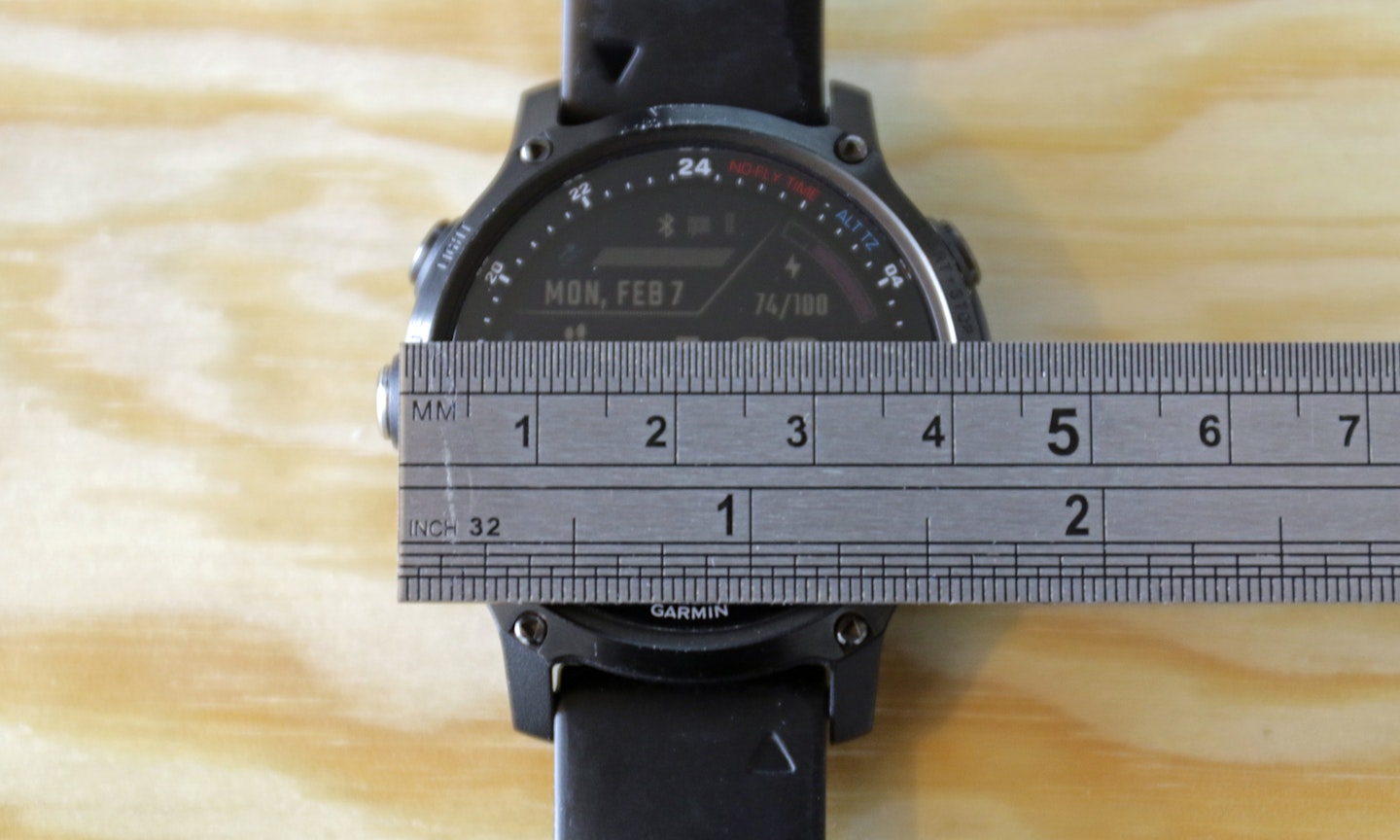
The Descent Mk2S is quite a bit more expensive than a Fenix so if you are toying with the idea of getting one for the styling as described in my slightly fanciful intro, you’ll have to want it enough to justify a £200 price jump.
If you’re a scuba diver the consideration is more black and white – the Descent Mk2S is a superb multisport activity and health tracker that just happens to be a fully-featured diving watch too. In the real world, that means you can get off your triathlon bike and get straight into the water without having to swap between the Descent and another more dedicated dive computer.
For a lot of people that convenience will be worth the near £1,000 price tag.
Verdict

A more affordable and less imposing version of Garmin’s 52mm Descent Mk2 watch, the Mk2S is a seriously good all-rounder if you want to combine your smartwatch and dive computer into one unit. If I dived more regularly this would be a no brainer, frankly.
Buy the larger 52mm Descent if you want to make use of Garmin’s air integration features, or this Mk2S if you have a smaller wrist, or want it in another colour than black.
I was being a bit flippant for the sake of an interesting intro in suggesting buying one if you have no intention of going scuba diving - a Fenix is a better bet in this case.
People buy analogue diving watches because they like the style and the Descent isn't a huge departure in terms of design, so that benefit isn't as clear. Plus the Fenix can be had with solar charging and a wider range of colours and materials, which is more useful on dry land.
How we tested it
I lived with this watch for six months and used it every day to log health metrics like sleep and resting heart rate, to aerobic training on my Tacx Neo 2T, and outdoor activities including mountain biking, rock climbing, surfing and stand up paddleboarding.
What to read next
Fossil Gen 6 Smartwatch Review: Impressive function and compatibility
Adam Binnie is the Commercial Content Editor and reviewer for WhatsTheBest, specialising in bikes, fitness, cars, parenting and cooking.
Subscribe to the What’s The Best Newsletter to keep up to date with more of the latest reviews and recommendations from the What’s The Best team.
